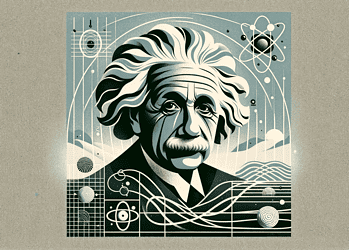
In science fiction, such as the show Star Trek, warp drives propel spacecraft across galaxies in the blink of an eye. While a lot of things that used to be in the realm of science fiction are now technical realities — examples including submarines, touchscreens, bionic limbs, and even credit cards — warp drives seem to be the final frontier. The very concept hinges on faster-than-light travel and even people who’ve slept through Physics 101 have heard at some point in their lives that “nothing can travel faster than light”.
But the seemingly impossible has never discouraged some of the more ambitious physicists who enjoy a good challenge. A team of researchers in the US has now published a study that has “numerically” shown that “classic warp drive spacetimes can be made to satisfy the energy conditions” in certain conditions. In other words, if the math checks out, the physicists claim that a warp drive may indeed be possible. Although, we lack the technology at the moment to turn theory into reality.
“This study changes the conversation about warp drives,” said lead author Dr. Jared Fuchs, a physicist at the University of Alabama, Huntsville. “By demonstrating a first-of-its-kind model, we’ve shown that warp drives might not be relegated to science fiction.”
A warp drive that isn’t a pipe dream?
Warp drive technology involves the manipulation of spacetime, a concept predicted by Albert Einstein’s theory of relativity. Instead of exceeding the speed of light — a feat that remains impossible according to current physical laws — warp drives theoretically allow for the expansion and contraction of spacetime itself. A spacecraft equipped with a warp drive would create a bubble of flat spacetime around itself, contracting space in front of it and expanding space behind it, effectively moving the ship through space at superluminal (faster-than-light) speeds.
The concept gained traction in 1994 when physicist Miguel Alcubierre proposed what is now known as the Alcubierre Drive. Alcubierre’s model suggested that a spacecraft could create and ride a wave of spacetime to achieve apparent faster-than-light travel without violating the principles of relativity. The major challenge, however, lies in the energy requirements and exotic matter needed to create such a space-time bubble. Currently, both of these remain beyond our technological capabilities.
For instance, an Alcubierre Drive requires negative energy, a concept that defies conventional physics as we understand it. This refers to a hypothetical type of energy that would have unusual (and downright impossible) properties, including a negative mass. With negative mass, if you push something, it accelerates toward you. If that sounds like it makes no sense, that’s because it doesn’t.
The existence of negative energy would violate several established principles. One of these is the weak energy condition, which states that the energy density in any frame of reference must be non-negative. Einstein’s general relativity expressly forbids negative mass.
A new warp drive
In their new study, the researchers propose a new model for a warp drive, one that doesn’t employ Alcubierre’s mental gymnastics. Even more notably, it doesn’t violate general relativity.
The researchers used a new computational tool, Warp Factory, to explore and design the spacetime metrics required for the warp drive. Their design starts with a Minkowski background (flat spacetime with no gravity or curvature) and adds a stable matter shell (a layer of regular, non-exotic matter arranged in a specific way around the spaceship) with a carefully distributed shift vector (a mathematical device used in the description of spacetime that dictates how spacetime is being “shifted” or modified around the spacecraft).
Together, this framework enables the warp bubble necessary for the spacetime modification. This bubble encloses the so-called “passenger region,” which is free from local spacetime curvature, allowing for geodesic motion without local acceleration. Essentially, it creates a shortcut through spacetime. Inside this bubble, spacetime is curved in a way that allows the spacecraft to move from one point to another faster than light would in normal (flat) spacetime, without the spacecraft itself having to travel at such speeds locally.
Unlike previous models, this new model adheres to all energy conditions by incorporating a regular matter shell with a positive ADM (Arnowitt-Deser-Misner) mass. This approach ensures the physical viability of the warp drive by using only known and theoretically feasible materials and mechanisms. The authors emphasize the importance of the shift vector distribution in achieving these conditions, differentiating their model from others that rely heavily on negative energy densities or superluminal speeds.
Practical considerations
The practicality of this warp drive in real-world applications remains speculative. It faces monumental engineering and technological challenges. The theoretical model, while robust within the confines of general relativity and classical physics, relies on a highly sophisticated and untested arrangement of matter and energy distributions. Achieving this on a practical scale — not to mention the enormous energy requirements and the creation of a stable warp bubble — remains far beyond our current technological ability.
“Although such a design would still require a considerable amount of energy, it demonstrates that warp effects can be achieved without exotic forms of matter,” added Dr. Christopher Helmerich, co-author of the study. “These findings pave the way for future reductions in warp drive energy requirements.”
Still, this model pushes the field forward by providing a potential roadmap for faster-than-light travel within the framework of known physics. This work could be a valuable blueprint for future research in spacetime engineering.
The findings appeared in the journal Classical and Quantum Gravity.





